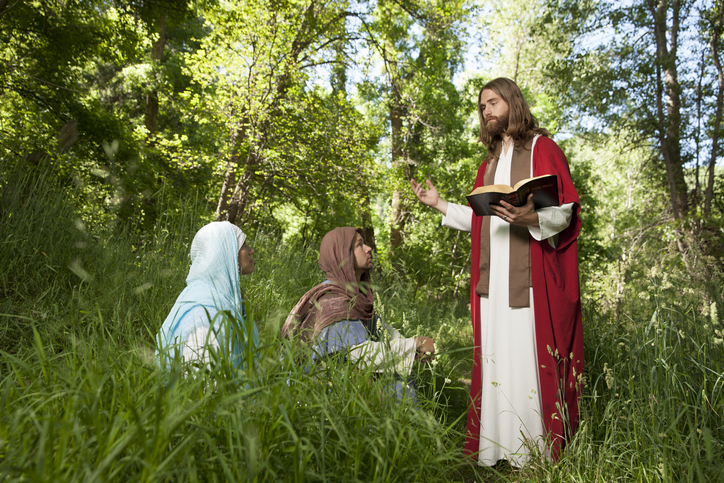I recently returned from a trip to Ireland. It was a wonderful trip up the East coast of the country, across the top and back down the West coast. Our tour started in Belfast and ended in Dublin. If you have been to Ireland, you know how beautiful it is. If you haven’t, it must be on your bucket list. It was on mine, and it has been checked off.
While driving through the countryside, I couldn’t get enough of the black-faced sheep in Northern Ireland. The fields were full of the herds, everywhere. It was early spring, so many lambs were also in the fields, almost swallowed up by the long, lush green grassy fields. They were adorable. So much so that I purchased a stuffed black-faced lamb for my cat. I placed it in her bed. She ignores it. I, on the other hand, get great pleasure just looking at it looking back at me. It often takes very little to make my heart happy.
Many thoughts of the Gospel of the Good Shepherd came to mind while enjoying this trip. I asked myself what makes a shepherd good? We so glibly slide those words from our mouths: “I know my sheep, and they know me.” How often have you thought about what it means to be the Good Shepherd? In another life, when I was teaching RCIA, every once in a while I would hear someone say “I’m not a sheep! I don’t blindly follow someone, and therefore I can’t get close to this image of Christ”. Well, let’s look at just what it meant to be the shepherd.
In the time of Christ, as in all of the ancient times, sheep were one of the main, vital economic forces of the economy of the tribes. Sheep provided milk, food, clothing; sheep were used to barter for other goods and even became a dowery of sorts for the daughters of the tribesmen. You marry my daughter, I’ll give you so many sheep to start your flock! If you give me so many sheep, I’ll marry your daughter. Better than a bank loan. But here’s the important part, the responsibility of the shepherd to protect that all-important flock.
When Jesus says “I am the Good Shepherd” it means he watches closely and protects his people, you and me. When the shepherd, as well as the Good Shepherd, says he is the sheep gate, it means that the shepherd will herd his flock into an enclosure and lay in the opening as the human gate. The sheep don’t leave, and no danger can enter without a fight from the shepherd. Jesus says “I know my sheep and my sheep know me.” Through our prayer and continued oneness with our Lord, we know him and will come to rely on him the same way the sheep rely on the shepherd. We are no longer alone and won’t be abandoned. There is nothing a good shepherd will not do for his flock. The shepherd will die for his flock as Christ died for us to bring us into grace and eventually to heaven. The life of a shepherd is not an easy one.
One of my favorite pictures of Christ as the Good Shepherd is a pencil drawing of him cuddling a lamb. You can see it HERE. I love that you can’t see Jesus’ entire face and that the lamb is looking so loved and protected, so safe and content. How often have you, as I have, wished you could be held and loved that way? As I get older, it becomes quite often. This longing has become my hope for heaven and its peace. And take note of the nail wound in Christ’s hand. This is our Savior after his death and rising, still protecting, still loving us. The life of this Shepherd was not an easy one.
When you are reminded of today’s Gospel words: “My sheep hear my voice; I know them, and they follow me. I give them eternal life, and they shall never perish”, recall what it means to be loved and protected by this Shepherd of shepherds, and find your peace.
God Bless.

Jeanne Penoyar, an Accounts Manager here at Diocesan, is currently a Lector at St. Anthony of Padua parish in Grand Rapids, MI. While at St. Thomas the Apostle, Grand Rapids, Jeanne was a Lector, Cantor, Coordinator of Special Liturgies, Coordinator of lectors and, at one time, chair of the Liturgy Commission. In a past life, secretary/bookkeeper at the Basilica of St. Adalbert where she ran the RCIA program for the Steepletown parishes. And she loves to write! When relaxing, she likes reading and word puzzles. You can contact her at jpenoyar@diocesan.com.




















